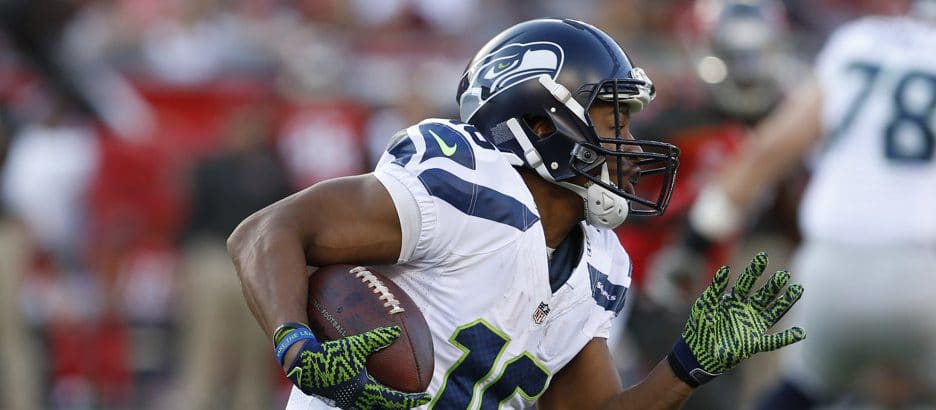This article is part of our Hidden Stat Line series.
I was excited last Tuesday when we posted the debut of this column, but the feeling quickly turned to disappointment after I read the first comment: "Ok, so whom would be your top targets via trade/waiver based on these numbers?".
Was it what I wanted to see? Not really. Did "voodochild" have a good point? Kind of. This won't be the best place to come if you're looking for quick conclusions (we have plenty of other content for that), but it's nonetheless important to explain why the information below can be useful. The simplest thing I can tell you is this: we're trying to evaluate intent more so than outcomes.
That's not to say I won't discuss efficiency or performance, but I'll be cautious with any conclusions based on a two-game sample. In any case, most of us already have a pretty good idea of which players are thriving and which are struggling, so I'd rather spend time taking a deeper look at what coaches are trying to do with their players (even if it isn't working).
Sometimes the observations will seem contradictory to what we see in a standard box score; other times I'll simply provide confirmation of what might already seem obvious.
I think the entire thing is worth reading, but I'm biased, and also a bit of a nerd. No offense taken if you prefer to skim for specific teams or players (ctrl+F is your friend). And, as always, feel free to leave a comment or ask me on twitter (@RotowireNFL_JD) if you have questions about players I might have missed or any of the statistics used below.
 Buccaneers 20
Buccaneers 20  Panthers 13
Panthers 13
Buccaneers
- O.J. Howard's snap share jumped from 78 percent in Week 1 to 92 percent in Week 2. However, the five plays he missed were all passes, and he was used as a pass blocker five times (per PFF). Howard thus ran routes on 20 of Tampa's 30 pass attempts, with his lone would-be target wiped out by his own PI penalty. The usage has been frustrating, and Bruce Arians may have a point about Howard not playing well — the 24-year-old has PFF's worst grade among 65 qualified tight ends. He already has two penalties, a lost fumble and a dropped pass that was intercepted. All in all, Howard has run 42 routes on Winston's 71 dropbacks, drawing just five of the Bucs' 59 targets. Yikes.
- Chris Godwin, on the other hand, has run a route on 68 of Winston's 71 dropbacks, playing 55 snaps in the slot and 54 outside. After Thursday's blow-up performance, PFF puts Godwin at 4-81-0 on five slot targets, compared to 7-93-1 on 10 targets outside — he's good everywhere.
- Tampa's three-way backfield split from Week 1 disappeared. Instead, Peyton Barber had a 23-82-1 rushing line on 65 percent of snaps, while Ronald Jones went 4-9-0 on 12 percent, and Dare Ogunbowale (25 percent, no carries, one target) played in obvious passing situations.
- Mike Evans had another quiet night — 4-61-0 on eight targets — but it wasn't for a lack of playing time (91 percent of snaps). He's accounted for 21 percent of the Bucs' targets and 37 percent of their air yards, so big games should be around the corner once Winston has more volume.
Panthers
- Cam Newton was a mess, again, in Thursday's loss. The differential between his completion percentage (56.2) and "expected completion percentage" (65.5) is the worst in the league among starting QBs. (Expected completion percentage - xCOMP% - is calculated by NFL Next Gen Stats, accounting for the positioning of defenders and pass catchers to determine a completion probability for each play.)
- Christian McCaffrey had a "floor" game, but he took every snap for a second straight week.
- Curtis Samuel and D.J. Moore both had double-digit targets on snap shares above 94 percent, and they could've had bigger games if not for the misfires by Newton. The Panthers mostly limit Moore to short and intermediate passes. His aDOT is 9.0, barely up from 8.9 last year; Samuel's is 15.6, up from 11.7. PFF shows Moore with just one target (an incompletion) 20-plus yards downfield, whereas Samuel has drawn seven (including two catches). Moore's role is nice for season-leagues, especially if they're PPR. But I'll take Samuel for large-field DFS tourneys — he's cheaper, and his deep targets increase variance.
- Greg Olsen played 82 percent of snaps and went over 100 yards. His back injury didn't seem to be a factor, and he's now sitting at 18 targets on 81 routes (with only six pass-blocking snaps). He looks like a serviceable TE1 again, even though he's lost a step and Newton has been terrible (reminder: volume is king).
 Cardinals 17
Cardinals 17  Ravens 23
Ravens 23
Cardinals
- Kliff Kingsbury's Cardinals are exactly as advertised, four-WR sets and all. They typically snap the ball with 15-22 seconds remaining on the play clock, and their 75 percent pass rate through two weeks isn't just a product of playing from behind. Their first three drives Sunday included three designed running plays (and one Kyler Murray scramble) among 14 snaps.
- David Johnson missed a decent chunk of the first half with a wrist injury, so that explains his 60 percent snap share (down from 86 percent the previous week). The pass/run split isn't great for him, but he's also been hurt by matchups with two teams (Detroit and Baltimore) that defend the run reasonably well and drain the play clock on offense. Eventually, the Cardinals will face some teams that aren't quite as far removed from their own pace preference.
- Damiere Byrd worked as the clear No. 3 receiver, with seven targets and a 93 percent snap share. Michael Crabtree and KeeSean were at 32 percent apiece in the No. 4 job, while TEs Maxx Williams and Charles Clay combined for a 48 percent share. Byrd will eventually have a big game or three if he's always on the field in this pass-heavy offense.
- Murray's 56.7 xCOMP% is the lowest in the league, and it explains why his completion percentage (57.2) is fifth-lowest among starters. If you've watched the Cardinals at all, you don't need fancy statistics to tell you he's trying a lot of high-difficulty passes.
- Larry Fitzgerald (11.2 aDOT) is still seeing plenty of short throws, but he's also drawn six targets 20-plus yards downfield, following just 15 all last season and 12 the year before (per PFF). After three straight years without a 40-yard gain, he already has three in two games with Murray and Kingsbury. Playing 92 percent of snaps in the slot isn't a deterrent to seeing deep throws in an air raid offense.
- Christian Kirk (9.9 aDOT) has an 82 percent slot rate, with four of his 20 targets coming 20-plus yards downfield. Keep in mind: a two-game sample doesn't necessarily mean Fitz will be the main deep threat over Kirk this year.
Ravens
- Lamar Jackson now ranks fourth in completion rate above expectation (6.7 points) and fourth in aDOT (10.1) among starters. The Ravens aren't hiding his arm anymore — much the opposite.
- Marquise Brown's 65 percent snap share — up from 18 percent the previous week — actually understates his role. In addition to the 13 targets, he was on the field for 38 of Baltimore's 46 pass calls, ahead of Mark Andrews (29), Miles Boykin (26) and Willie Snead (25), per PFF. Brown isn't just a risky, floor/ceiling play — he's the Ravens' No. 1 receiver, drawing short and deep targets alike. He already has nine receptions on passes within 10 yards of the L.O.S.
- Andrews has been targeted on 18 of his 47 routes (38 percent), producing 4.68 yards per route run (YPRR). For comparison, Julio Jones was targeted on 29 percent of his routes last year and led the NFL with 2.93 YPRR. The efficiency here is far from sustainable, but there is a bit of room for snap growth to offset the inevitable dip, considering Andrews has run a route on 71 percent of Jackson's dropbacks. Either way, Andrews and Brown dominate this passing attack.
- Mark Ingram got 58 percent of snaps and 75 percent of Baltimore's RB touches, despite missing some plays after he had the wind knocked out of him on a 20-yard reception.
 49ers 41
49ers 41 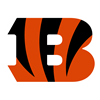 Bengals 17
Bengals 17
49ers
- Matt Breida, Raheem Mostert and Jeff Wilson each had at least 15 snaps and 10 carries, with the latter vulturing a pair of touchdowns before piling on volume in garbage time. Breida and Mostert both got some work on third downs and in the two-minute drill, so it wasn't an early/late-down split.
- Marquise Goodwin played 51 percent of snaps, followed by Dante Pettis (49 percent), Richie James (46 percent), Deebo Samuel (40 percent) and Kendrick Bourne (32 percent). On Jimmy Garoppolo's 27 dropbacks, James and TE George Kittle ran the most routes (19), followed by Goodwin (18), Samuel (14) and Pettis (12). Of course, the blowout played a role in the lack of snap/route distinction. Goodwin, Samuel and Kittle were the main guys before things got out of hand.
Bengals
- John Ross saved his day (for fantasy owners) with a 66-yard, catch-and-run TD in the final minute. He did get heavy usage beforehand, running a team-high 44 routes while playing even more snaps (86 percent) than Tyler Boyd (79 percent). Ross leads the league in YAC per catch (13.9) and ranks 13th in air yards (237), but the nature of his production (55 percent catch rate, 21 percent target share) is less encouraging — the "fluke" radar is pinging.
- The good news for Ross (and Boyd)? Cincinnati leads the league in pass rate (76 percent), including 69 percent in the first quarter of games and 73 percent in the first half. The throwing isn't just a product of losing — it's Zac Taylor's preferred strategy.
- That's bad news for Joe Mixon, who still loses some passing-down snaps to Giovani Bernard. Despite playing in a pass-heavy offense, Mixon is t-24th among RBs with 35 routes through two weeks (Bernard is 16th with 42).
- Cincinnati had an average of 2.86 WRs on the field per snap, up a tick from 2.75 the previous week. Zac Taylor's heavy use of 11 personnel mostly forces tight ends C.J. Uzomah and Tyler Eifert to rotate snaps rather than playing at the same time.
- Theoretically, the three-wide sets shouldn't hurt Mixon, assuming the Bengals eventually give him some carries. He had 5.6 YPC on 147 carries out of 11 personnel last season, compared to 4.2 YPC out of 12 and 11 personnel. This isn't any surprise — RBs, on average, are far more efficient on runs from spread-out formations.
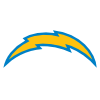 Chargers 10
Chargers 10 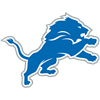 Lions 13
Lions 13
Chargers
- Austin Ekeler played 73 percent of snaps, following 75 percent the previous week. That's right in Melvin Gordon's typical range, and Ekeler has drawn a target on 25 percent of routes in his career — even higher than Gordon's mark of 22 percent. Ekeler ranks second in the league with 14 avoided tackles — eight on rushes, six on catches (per PFF). I'm not sure there's any remaining argument against Ekeler as an RB1 until Gordon returns. The pass-catching skill and elusiveness quell any concerns about rushing volume.
- Virgin Green played 88 percent of snaps sans Hunter Henry (knee), but Green drew just two targets and took nine snaps as a pass blocker.
- Keenan Allen leads the NFL in team share of targets (36 percent) and air yards (54 percent). He's the only show in town right now.
- Mike Williams played 61 percent of snaps, so he wasn't just a red-zone specialist or decoy. He played 65 percent the prior week, and he's barely run more routes (52) than Ekeler (48), while Allen (73) is far ahead of both. Maybe it's just about the knee; maybe not. Either way, the Chargers should give him more snaps as the season progresses.
Lions
- Kerryon Johnson played 54 percent of snaps, after 57 percent in Week 1. This time, he lost equal shares to Ty Johnson (21 percent) and C.J. Anderson (20 percent), with no clear division between early/passing downs.
- T.J. Hockenson was on the field for 25 of Matthew Stafford's 32 dropbacks and only blocked on two of those plays. The rookie has run fewer routes (59) than Kenny Golladay (81) and Marvin Jones (77), but more than Danny Amendola (56), Kerryon (34) and Jesse James (26). Hockenson is at least getting a fair chance to be the No. 2 option behind Golladay.
- Matthew Stafford has the league's fourth-highest aDOT (10.9) and leads all starting QBs (per PFF) with a 22.7 deep-throw percentage (20-plus yards downfield). So far, this is drastically different from what we saw under former OC Jim Bob Cooter — Darrell Bevell is dialing up more runs and more deep passes, rather than the barrage of short throws.
 Vikings 16
Vikings 16  Packers 21
Packers 21
Vikings
- Kirk Cousins was forced to throw after the Packers built a 21-0 lead. It didn't go well, to say the least, and Cousins now has the worst PFF grade among QBs after two weeks. He's been pressured on a league-high 61 percent of snaps, but part of that is his own fault — his average of 3.27 seconds from snap to throw is the longest in the league.
- Dalvin Cook, on the other hand, has the third-best grade among RBs, leading the league with 185 yards after contact and t-3rd with eight avoided tackles on carries. He played 72 percent of snaps in this game, including 27 of Cousins' 35 dropbacks (20 routes, seven pass-block snaps).
- Stefon Diggs, Adam Thielen and Kyle Rudolph each played at least 89 percent of snaps, but Rudolph was used as a pass blocker 10 times, while Diggs' seven targets included a drop and two interceptions.
Packers
- Aaron Jones exploded for 23-116-1 and 4-34-0, but he played just 57 percent of snaps and actually ran fewer routes (16) than Jamaal Williams (19). The Packers tend to give Jones the ball when he's on the field, so he doesn't need huge snap counts to produce games like this. Just know there were also be some lean outings, so long as Williams keeps his sizable role.
- Marquez Valdes-Scantling played 87 percent of snaps and ran the same number of routes (37) as Davante Adams. MVS is the clear No. 2 WR here.
- Geronimo Allison ran 21 routes on a 45 percent snap share, so don't be fooled by the TD. Matt LaFleur is giving No. 2 tight end Marcedes Lewis just as many snaps as Allison.
- Aaron Rodgers didn't have a big stat line, but he completed each of his 17 passes when he wasn't pressured and had just one incompletion on a throw less than 10 yards downfield. His cumulative PFF grade is up to 11th among QBs, though his completion percentage (62.5) is a bit below his xCOMP% (64.1).
- One surprise? LaFleur's use of heavier formations hasn't come with a huge increase in play-actions passes. Rodgers has used a play-fake on 25 percent of dropbacks, tied for 18th among 31 qualified QBs. It is at least an increase from last year's rate of 20 percent, which ranked 30th of 37. (This is important because play-action passes are far more efficient league-wide.)
 Colts 19
Colts 19 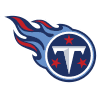 Titans 17
Titans 17
(Did anyone actually watch this game?)
Colts
- Jacoby Brissett's average target depth (5.2) is shortest in the league through two weeks, and nearly two yards below Blake Bortles' league-low 7.0 aDOT from last year. Plus, the Colts are fourth in the NFL with a 53 percent run-play rate. Despite the three touchdowns, I see no upside until/unless the training wheels come off.
- T.Y. Hilton is dominating the Indy passing attack more than usual, ranking 12th in the NFL in target share (27 percent) and sixth in air-yards share (45 percent). Last year, he was at 22 percent and 34 percent, respectively. He won't score touchdowns every week, but a bigger slice of a smaller pie would mitigate some of the post-Luck dip. Still, I'm treading cautiously.
- Hilton was the Colts' only WR to play more than half the snaps. Deon Cain (46 percent), Zach Pascal (44 percent), Chester Rogers (40 percent) and Parris Campbell (25 percent) all rotated, with Cain getting the most routes (23) while Pascal (12) was used primarily for his run blocking.
- Jack Doyle (71 percent) had a comfortable snap advantage over Eric Ebron (47 percent), but the latter had a 21-20 edge in routes (the same idea as what we saw last week). Those numbers are discouraging for both players, considering Hilton ran 36 routes.
- Marlon Mack played 68 percent of snaps, down from 76 percent the previous week. The small percentage dip is less worrisome than the fact he lost five carries to a now-healthy Jordan Wilkins, who ripped off a 55-yard gain. The good news for Mack? He accounted for 19 of the team's 31 pass routes from RBs, easily beating Nyheim Hines (eight) and Wilkins (four). The bad news? Mack caught two passes, but he's drawn just 62 targets on 436 career routes — 14 percent. He's a check-downs and screens guy, not a legit receiving weapon like the aforementioned Ekeler.
Titans
- Marcus Mariota's aDOT (5.1) is fifth-lowest, yet his average time to throw is third-longest (2.95). It's a more extreme version of the same thing we saw all last season when he led the league in sack rate (11.3) — he holds the ball too long and rarely makes good use of the extra time. Deshaun Watson takes unnecessary sacks, but he makes up for it with successful long throws on other improvised plays. What, exactly, does Mariota do?
- Delanie Walker played 57 percent of snaps, up from 46 percent the week before. He tied Adam Humphries for second on the team with 25 routes, behind Corey Davis (33) but ahead of Dion Lewis (20), Tajae Sharpe (18), A.J. Brown (18) and Jonnu Smith (10).
- Yes, I said Tajae Sharpe, because he's still sharing snaps with Brown, despite the rookie hitting 100 yards in his pro debut. It might seem like this is temporary, but you won't win much money betting on the Titans to make smart decisions. Sharpe has received significant playing time without any production under two different coaching regimes.
 Patriots 43
Patriots 43 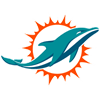 Dolphins 0
Dolphins 0
Patriots
- Julian Edelman (92 percent snaps) got his usual workload, followed by Josh Gordon (79 percent), Phillip Dorsett (49 percent) and Antonio Brown (33 percent).
- Sony Michel (49 percent) was still getting carries in the fourth quarter, until he lost a fumble. It's a nice boost for his rest-of-season value if the Patriots will use him in garbage time, considering there was some doubt about his Week 2 volume in a likely blowout. Of course, he's still sharing work with James White (31 percent) and Rex Burkhead (24 percent).
- Matt LaCosse (58 percent) and Ryan Izzo (43 percent) shared playing time, combining for 25 routes and 41 run-blocking snaps. I wonder if tight ends will join the Patriots' passing game once Ben Watson returns from suspension? They aren't really part of it right now.
Dolphins
- Mark Walton entered the backfield mix with 16 percent of snaps, joining Kenyan Drake (55 percent) and Kalen Ballage (34 percent). The Dolphins have passed on 75 percent of plays through two weeks, and it's hard to imagine any scenario in which they don't spend the entire season playing catch-up.
- DeVante Parker played 92 percent of snaps, followed by Preston Williams (68 percent), Jakeem Grant (61 percent) and Allen Hurns (45 percent). Parker is the No. 1, for now. Of course, he finished with no catches on seven targets — ouch.
- Mike Gesicki played just 56 percent of snaps, but his 30 routes on 48 QB dropbacks tied Grant for third most on the team. Fun fact: I had to start Gesicki in a dynasty league this week... I debated leaving the spot blank.
 Bills 28
Bills 28 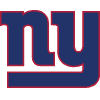 Giants 14
Giants 14
Bills
- Frank Gore had five touches before Devin Singletary got his first. Gore finished with 21 touches on a 59 percent snap share, far ahead of the rookie (33 percent, six carries, 13 routes, zero targets). Singletary injured his hamstring, but he was still in the game with five minutes remaining, so we probably can't blame that for the big drop-off from Week 1 (70 percent, four carries, 35 routes, six targets). Meanwhile, T.J. Yeldon is technically still alive but played just five snaps.
- Zay Jones played more snaps (59 percent) than Cole Beasley (49 percent), but Beasley ran a route on 26 of Josh Allen's 36 dropbacks, compared to 21 routes for Jones.
- John Brown played 79 percent of snaps, including 35 of Allen's 36 dropbacks. Brown is 13th in the league in target share (27 percent) and 12th in air-yards share (41 percent). He's functioning as a legit No. 1 through two games, with results to match.
- Allen's aDOT sits at 8.9 (12th of 35) through two weeks, up from 8.2 after Week 1. His average time from snap to throw is 2.83 (10th-longest), up from 2.72 after Week 1. Maybe it was just a one-week blip, rather than a committed effort to throw quicker, safer passes. Whatever the case, his completion percentage (64.2) is respectable, though still below the xCOMP% (66.2) calculated by NFL's Next Gen Stats.
- The Bills barely used their tight ends and running backs to pass block in Week 1 (just 10 times on 44 dropbacks). In Week 2, they used an extra blocker 19 times on 36 dropbacks, so maybe the odd Week 1 gameplan was just an outlier. Also, they had 27 non-Allen carries in Week 2, up from 15 in Week 1.
Giants
- Eli Manning never had much chance in this one, playing without Sterling Shepard (concussion) and Golden Tate (concussion) against a defense that finished second in pass DVOA last season and limited Sam Darnold to 4.3 YPA in Week 1. Manning's average target depth (7.6) is right in the same low range as last season (7.2), and he's completed just three passes 20-plus yards downfield through two games, per PFF. Daniel Jones is coming soon to a television screen near you. (Update: Manning was benched Tuesday)
- Evan Engram played 79 percent of snaps, up from 77 percent the prior week. He ran 36 routes on Manning's 46 dropbacks, also pass blocking three times. He isn't quite an every-down player, but he doesn't do much blocking and obviously is a priority in the passing game whenever he's on the field.
- Saquon Barkley played 87 percent of snaps, running 35 routes while pass blocking just four times.
- Bennie Fowler (79 percent snaps) led the WRs in playing time and targets, followed by Russell Shepard (59 percent), Cody Latimer (57 percent), TJ Jones (43 percent) and Cody Core (20 percent). Fowler accounted for three of the team's four deep targets, but his five catches all came on shorter throws. Latimer was concussed.
 Seahawks 28
Seahawks 28  Steelers 26
Steelers 26
Seahawks
- Chris Carson's snap share (54 percent) was way down from the previous week (77 percent), in part due to a fumble and a botched handoff (both recovered by the opponent). However, he wasn't truly benched at any point, getting at least one carry on both of the drives that followed turnovers. Rashaad Penny (33 percent, 10 carries, one target) had a much bigger role than the previous week, and C.J. Prosise (13 percent) handled the two-minute drill before halftime. Carson now has one game operating as a three-down workhorse and one game working in a timeshare closer to what we saw last year.
- Tyler Lockett and DK Metcalf both played 89 percent of snaps, but their usage was very different. Lockett drew 11 of his 12 targets within 10 yards of the line of scrimmage, while Metcalf saw five of his seven beyond that distance. Lockett now leads the team with 25 percent target share, but Metcalf ranks fifth in the league with 48 percent of his team's air yards. Part of the reason that number is so high? Russell Wilson's average target depth (7.5) is way down from last year (9.2). Of course, the sample is only 55 passes, so it may just be a two-game blip.
- Will Dissly played 59 percent of snaps in his two-TD performance, finishing fourth on the team with 25 routes, behind Lockett (45), Metcalf (44) and Jaron Brown (33). Nick Vannett played just 42 percent of snaps, but he actually ran routes (24) on a higher percentage of his plays. Dissly isn't a reliable fantasy option at the moment, but he might be if/when he takes some of those snaps and routes from Vannett.
Steelers
- James Conner played 54 percent of snaps, up from 46 percent in the opener despite hurting his knee early in the fourth quarter. He finished with 15 of the team's 20 RB opportunities (carries+targets), but Jaylen Samuels did get some work before Conner was injured.
- Vance McDonald played 91 percent of snaps, with his 34 routes nearly matching JuJu Smith-Schuster (36) for the team lead. McDonald lost snaps Week 1 when the Steelers used five-wide formations, but he wasn't losing anything to reserve tight ends Xavier Grimble and Zach Gentry. The three-down usage produced two TDs in this one.
- The Steelers are fourth in the league with a 74 percent pass-play rate, but they actually fall to 16th (57 percent) if we only count first and second downs in the first half of games. They've been forced to play from behind both weeks, but there has been an (unsuccessful) effort at run-pass balance. They'll probably try to run more now that Mason Rudolph is replacing Ben Roethlisberger.
- The five-wide stuff from Week 1 against New England (14 snaps) wasn't part of the plan against Seattle. That explains most of the snap-count rise for McDonald and Conner.
- James Washington was second among WRs in both snaps (60 percent) and routes (23), but he was still far behind Smith-Schuster and only slightly ahead of Diontae Johnson (47 percent, 21 routes). Donte Moncrief (32 percent) and Ryan Switzer (23 percent) were marginalized after poor Week 1 performances, and Moncrief's lone target in this game was an ugly drop that bounced off his hands for an INT.
- Smith-Schuster played just 54 percent of his snaps in the slot, so Switzer's lost playing time wasn't just about getting JuJu inside more often. Smith-Schuster actually had a higher slot rate (61 percent) Week 1.
 Cowboys 31
Cowboys 31  Redskins 21
Redskins 21
Cowboys
- Ezekiel Elliott moved closer to his 2018 usage, playing 76 percent of snaps. He tacked on four carries for 35 yards in the final three minutes when the Cowboys were up by 10 points, but earlier he lost five carries and nine pass routes to Tony Pollard.
- Dak Prescott is PFF's No. 2 graded QB through two weeks, narrowly trailing Lamar Jackson. Prescott's average target depth (8.5) is up a bit from last year (7.6), though not enough to reach conclusions after a two-game sample.
- It does seem the Cowboys are committed to throwing more under Kellen Moore, as they rank 12th in pass-play rate (60 percent) on first and second downs in the first half of games. They threw just 51 percent of the time (22nd most) in those situations last season.
- Randal Cobb played 76 percent of snaps and ran 26 routes (Amari Cooper had 35), drawing six targets after seeing five the previous week. The Cowboys have been living out of three-wide formations and don't have any reason to change the approach.
- Jason Witten (77 percent of snaps) got more playing time than any other skill player besides Cooper (91 percent), running 24 routes while pass blocking just four times. Blake Jarwin got 34 percent of snaps and ran 10 routes. So much for the spring idea of Witten handling a part-time role; he's back on the streaming radar at tight end.
- Devin Smith got most of his 18 snaps and two of his three targets after Michael Gallup injured his knee early in the fourth quarter, but Smith's long TD came before Gallup was hurt.
Redskins
- Chris Thompson led the backfield with 45 percent of snaps, followed by Adrian Peterson (29 percent) and Wendell Smallwood (26 percent). Peterson took 11 carries on his 18 snaps, while Thompson and Smallwood combined for 33 routes and just three carries. I know they were playing from behind in the second half, but it's probably not smart to be so predictable.
- Terry McLaurin played 90 percent of snaps and tied Paul Richardson (87 percent) for the team lead with 38 routes. Slot man Trey Quinn (79 percent, 34 routes) wasn't too far behind, nor was tight end Vernon Davis (74 percent, 34 routes).
- Thompson actually leads the team in target share (22 percent) after two weeks, but McLaurin's 50 percent share of team air yards is third highest in the NFL. His 16.3 aDOT isn't crazy high, but it sticks out like a sore thumb compared to Richardson (8.6), Quinn (5.5), Davis (5.0) and Thompson (1.2). The rookie won't stay this consistent, but his usage hints at more big games to come before the end of the year. He has PFF's No. 6 grade among 56 WRs with double-digit targets.
 Jaguars 12
Jaguars 12  Texans 13
Texans 13
Jaguars
- Gardner Minshew attempted just three passes 20-plus yards downfield, completing one for a gain of 31. He completed 18 of 20 passes for 149 yards and a touchdown when he wasn't pressured, compared to 5-of-13 for 64 yards when he was (per PFF). Minshew's aDOT (6.1) is fifth lowest in the league.
- Leonard Fournette played 97 percent of snaps, running 35 routes and pass blocking eight times. Even if this offense stinks, it'll be hard for him not to produce as at least a low-end RB1 if he's always on the field.
- Dede Westbrook, Chris Conley and D.J. Chark all had snap shares in the 82-87 percent range. They each drew one of Minshew's targets 20-plus yards downfield, but Westbrook otherwise has operated in the short areas, with his aDOT (3.1) far below Chark (13.8) and Conley (13.0). Each of the three wide receivers and Fournette are sitting on target share in the 17-20 percent range through two weeks.
- Geoff Swaim (52 percent) and James O'Shaughnessy (66 percent) continue to split snaps at tight end, with no clear distinction between who runs routes and who blocks.
Texans
- Carlos Hyde played more snaps (61 percent) than Duke Johnson (39 percent), seeing 20 carries and 10 routes. plus eight snaps as a pass blocker. Johnson had six carries and 16 routes, with just two snaps as a pass blocker. This is exactly what Johnson's fantasy owners feared when the Texans signed Hyde, who now ranks ninth in PFF's elusive rating (74.8) among 30 RBs with at least 20 carries. Hyde isn't exactly "elusive", but the formula also accounts for broken tackles and yards after contact (3.9 per carry, 7th-most).
- Keke Coutee played 44 percent of snaps in his 2019 debut, slightly ahead of Kenny Stills (38 percent). With Will Fuller and DeAndre Hopkins both above 90 percent, it appears Coutee and Stills will just be battling each other for that No. 3 role, rather than poaching any work from the starters.
- Jordan Akins played 59 percent of snaps, down from 70 percent in Week 1. He's sharing with blocker Darren Fells (67 percent), who ran 13 routes and pass blocked 10 times. Akins ran 17 routes and pass blocked just twice, but he did have 19 snaps as a run blocker.
 Chiefs 28
Chiefs 28  Raiders 10
Raiders 10
Chiefs
- Mecole Hardman played 77 percent of snaps, trailing Sammy Watkins (97 percent) and Demarcus Robinson (95 percent). The latter enjoyed a ridiculous performance, catching all four of his targets beyond 20 yards downfield. Watkins went 0-for-3 in the same range, while Hardman was 1-for-1 with a 42-yard touchdown. Travis Kelce went 2-for-2.
- Patrick Mahomes is now 10-of-15 for 339 yards, five TDs and no INTs on throws 20-plus yards downfield this year. Surprisingly, he ranks just ninth in aDOT (9.4) and fifth in deep throw percentage (19.5).
- LeSean McCoy held an 11-9 advantage in carries, but Damien Williams had a 28-17 edge in routes and a 5-3 edge in targets. Both got banged up, but not until late in the game (or else they played through the injuries).
Raiders
- Josh Jacobs played just 46 percent of snaps, with Jalen Richard (31 percent) and DeAndre Washington (23 percent) heavily involved once the Raiders fall behind. We discussed this possibility last week, as Jacobs' dominance of playing time in the opener largely was a product of the Raiders rarely facing true passing downs. The rookie has been awesome, but he also appears game-script sensitive.
- Darren Waller (95 percent snaps) and Tyrell Williams (94 percent) rarely came off the field, while Hunter Renfrow (75 percent) got more work at the expense of backup tight end Foster Moreau (23 percent). Renfrow had just four catches for 30 yards, but he actually led the team with eight targets. Fantasy owners may have been disappointed to see Waller and Williams draw seven targets apiece in a game where Derek Carr threw 38 passes.
- Williams' 43 percent share of air yards ranks ninth in the NFL, with his aDOT (14.4) separating him from Waller (5.8) and Renfrow (5.6) if we're hunting for long gains in DFS lineups. Of course, Waller leads the team with 13 catches and 15 targets, plus he's averaging 6.5 YAC per reception. Williams is averaging 2.9 YAC and Renfrow is at 3.7.
 Bears 16
Bears 16  Broncos 14
Broncos 14
Bears
- Anthony Miller rejoined the offense with 52 percent of snaps, which forced Tarik Cohen (38 percent) to play more snaps in the backfield (15) and fewer in the slot (five). Cohen played 40 slot snaps and four backfield snaps Week 1.
- David Montgomery led the backfield in snap share (44 percent) and carries (18), comfortably ahead of Mike Davis (25 percent, 3). Montgomery's 27 snaps included 18 runs, eight pass routes and one pass-blocking play, while Cohen ran 14 routes and Davis just six.
- Trey Burton was limited to 43 percent of snaps and 11 routes in his return from a groin injury. Allen Robinson and Taylor Gabriel tied for the team lead with 28 routes apiece.
- The Bears now rank 24th in pass-play rate (53 percent) on first and second downs in the first half of games. Is their defense good enough to make the playoffs if they need to spend an entire season hiding Mitchell Trubisky?
- Speaking of the devil, Trubisky has PFF's No. 33 grade among 36 QBs through two weeks. The 5.5-point gap between his completion percentage (58.3) and xCOMP% (63.9) is sixth-worst among starting quarterbacks.
Broncos
- Phillip Lindsay (48 percent of snaps) and Royce Freeman (52 percent) had another even split, while Devontae Booker was restricted to special teams. For a second straight week, there was no clear pattern to when each back was used — both got work on early downs and passing downs, running 24 routes apiece.
- Noah Fant played 66 percent of snaps, down from 81 percent in Week 1. He ran 36 routes among Denver's 56 pass snaps, trailing Courtland Sutton (55), Emmanuel Sanders (55) and No. 3 receiver DaeSean Hamilton (40), but comfortably ahead of fellow tight end Jeff Heuerman (21 routes on 46 percent of snaps).
- Hamilton once again dominated slot work, leaving Sanders to play 55 of his 75 snaps out wide. It hasn't mattered in the box score, but we should at least mention that Sanders' 22 slot routes this season have yielded an 8-77-0 receiving line on nine targets, good for 3.5 yards per route. His 63 outside routes have produced 8-107-2 on 11 targets, good for 1.7 yards per route. The mix seems to be working pretty well for Sanders, who has drawn 25 percent of the team's targets.
- Courtland Sutton's 19 percent target share isn't too encouraging, but he does lead the team in air yards (177, 35 percent) and aDOT (11.8).
 Saints 9
Saints 9  Rams 27
Rams 27
Saints
- Alvin Kamara played 65 percent of snaps, down from 76 percent in Week 1. Latavius Murray (35 percent) got more playing time, with five carries, 15 routes and two pass-blocking snaps.
- Michael Thomas played 98 percent of snaps and ran 45 routes, well ahead of Ted Ginn (34 routes, 60 percent) and Jared Cook (33 routes, 68 percent). Cook is losing some snaps to Josh Hill, but at least the 32-year-old has been asked to block just three times on 66 pass snaps through two weeks.
- Tre'Quan Smith was down at 58 percent and 26 routes, exiting with an ankle injury early in the fourth quarter. Ginn's usage advantage was just a product of the late-game absence for his teammate.
- Teddy Bridgewater's 30 pass attempts produced 11 targets for Thomas, five for Cook, three for Kamara, three for Taysom Hill (WHY???), two for Smith and one apiece for Murray, Zach Line and Deonte Harris.
Rams
- Todd Gurley played 64 percent of snaps, including 16 carries and 20 routes. Malcolm Brown played 36 percent, with six carries and 12 routes. Gurley scored the TD, but Brown later got a carry from the Saints' 4-yard line.
- Brandin Cooks, Robert Woods and Cooper Kupp each played at least 94 percent of snaps — same old, same old.
- Gerald Everett played 71 percent, drawing five targets on 24 routes. He's back on the TE streaming radar if Tyler Higbee (lung) misses time.
- Jared Goff has PFF's No. 18 grade among 35 QBs (20-dropback min.). His 75.4 adjusted completion percentage ranks 19th (the stat accounts for throwaways, drops, batted passes, etc.). Goff's aDOT is all the way down at 6.9, compared to 8.8 last season. None of these developments is encouraging, but we are talking about a two-game sample. It's too soon to panic.
 Eagles 20
Eagles 20  Falcons 24
Falcons 24
Eagles
- Everybody got hurt, so there's not much to discuss besides the backfield, where Miles Sanders got 43 percent of snaps and 54 percent of opportunities (targets+carries). Philadelphia threw the ball on each of Darren Sproles' 28 snaps, with the scatback running 25 routes and pass blocking just three times. On the other hand, Jordan Howard's 18 snaps featured nine carries for him and two for Carson Wentz.
- Sanders is averaging just 2.5 YPC, ranking 29th among 30 RBs (20-carry min.) in PFF's elusive rating (one avoided tackle on 24 touches) and 23rd in yards after contact per carry (2.3). Howard has been slightly better in that regard, with two avoided tackles on 17 touches and 3.3 YAC per carry. The rookie has a much higher ceiling and offers more potential as a pass catcher, but Howard (4.4 YPC) has been more effective so far.
Falcons
- Devonta Freeman played 62 percent of snaps, up from 50 percent in Week 1. Ito Smith played 38 percent, while Kenjon Barner was limited to special teams. This is the same idea we saw in Denver — the split doesn't appear dependent on situation (it also isn't as even). The Falcons appear comfortable with both running backs on early downs and passing downs, with Freeman sitting at 20 carries and 49 routes, while Smith has 10 carries and 41 routes.
- Calvin Ridley still plays fewer snaps (64 percent) than Mohamed Sanu (83 percent), but the gap in routes (41-33) was somewhat smaller, and the youngster has drawn a target on 19 percent of routes in his career (that's actually a high number for someone on the same team as Julio Jones). Ridley has 16 targets on 81 routes (20 percent) this season, so we should be wary of assuming increased volume based on the counting stats. Matt Ryan's 89 pass attempts are tied for third-most in the league.
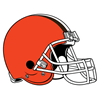 Browns 23
Browns 23  Jets 3
Jets 3
Browns
- Nick Chubb played 61 percent of snaps and caught four passes, but he lost some work to D'Ernest Johnson (three carries, four targets) on passing downs and later in garbage time.
- Odell Beckham finished his big night with a 29 percent target share and 39 percent air-yards share through two weeks, ranking seventh and 15th, respectively.
- Jarvis Landry is much further down the leaderboard at 19 percent target share and 23 percent air-yards share, down from last year's marks of 26 percent and 31 percent. Surprisingly, his aDOT (11.2) hasn't really changed so far, down only a notch from last season's career-high mark of 11.9. He worked from the slot on 87 percent of his snaps Week 1, but that dropped to 57 percent in Week 2. It's worth a close watch, considering he led the league with 856 slot yards in 2016, the one year he topped 7.0 YPT (all the way up at 8.7).
- Damion Ratley played 61 percent of snaps, working well ahead of Taywan Taylor (26 percent) as the fill-in No. 3 receiver with Rashard Higgins (ankle) unable to play.
- Baker Mayfield's 9.9 aDOT is sixth-highest in the league, so it partially explains his disappointing completion percentage (60.3), though NFL's Next Gen Stats shows an xCOMP% of 63.4. The differential of 3.1 percentage points is 11th-worst in the league (insert small-sample warning here).
- Demetrius Harris played 78 percent of snaps, dominating playing time at tight end after David Njoku entered the concussion protocol. Ricky Seals-Jones saw just three snaps on offense.
Jets
- Le'Veon Bell played 90 percent of snaps, down from 100 percent the previous week. The Jets gave him the ball on 31 of his 61 snaps, leaving them with no choice but to sub in Ty Montgomery (35 percent) for a fatigued Bell on a few occasions. The Jets had 17 snaps with both Montgomery and Bell on the field, as they adjust to life without Quincy Enunwa (or a competent QB).
- Jamison Crowder (99 percent), Robby Anderson (99 percent) and Ryan Griffin (90 percent) rarely left the field, and Josh Bellamy (66 percent) worked ahead of Demaryius Thomas (10 percent) as the No. 3 receiver.
- Luke Falk completed 20 of 25 passes for 198 yards (7.9 YPA), but he too often settled for short passes when the Jets needed more. There was a seven-yard gain on a 3rd-and-17, a nine-yard gain on a 3rd-and-15, an eight-yard gain on a 3rd-and-11, a one-yard gain on a 4th-and-2 and a one-yard gain on a 4th-and-3. (Starting quarterback Trevor Siemian suffered a leg/ankle injury that looked serious.)
- The Jets and Ravens are the only teams with two players that have target share above 25 percent. Crowder leads the way at 32 percent, followed by Bell (26 percent), Anderson (18 percent) and Griffin (8 percent). The uber-predictable target distribution may keep Bell and Crowder alive for fantasy purposes while Sam Darnold recovers from mono. Anderson is on shakier ground, but he at least did some good things with Falk on Monday.

